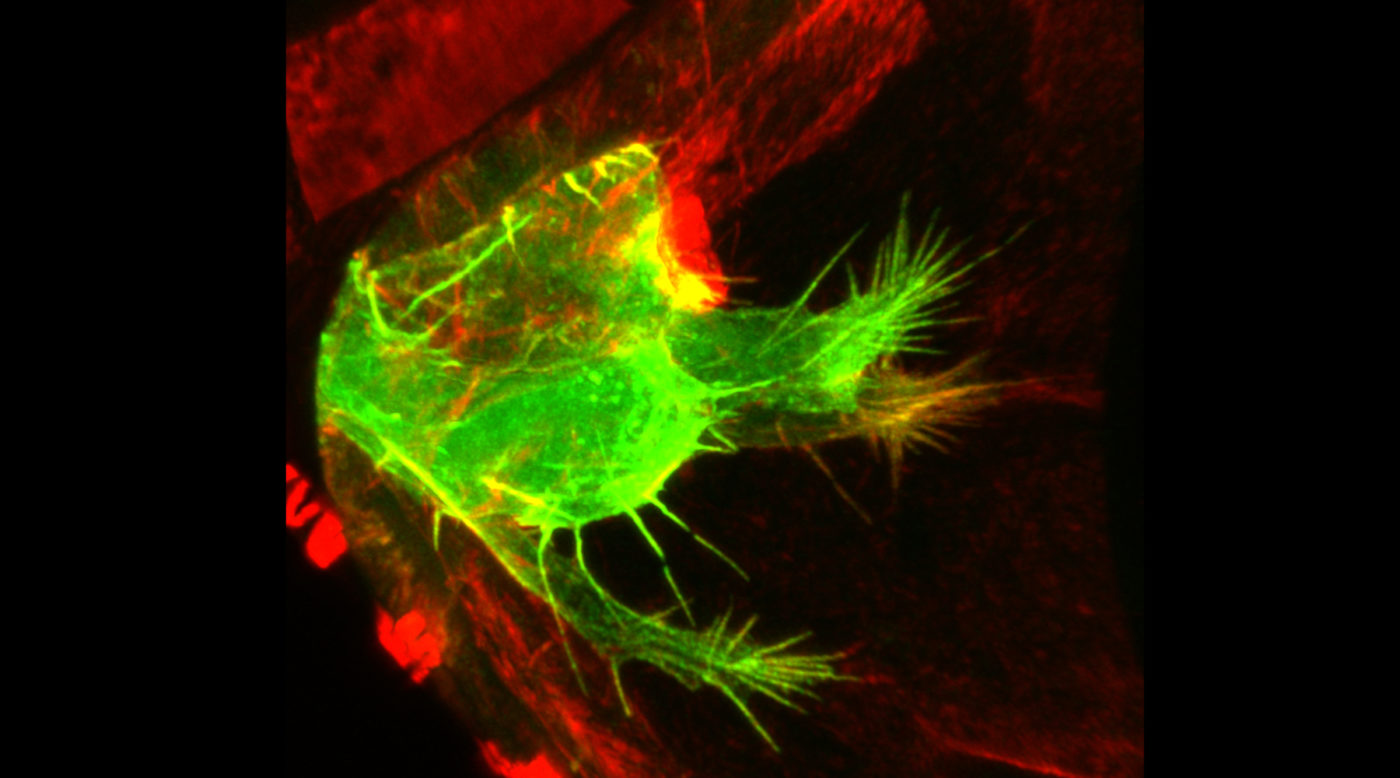News
Shedding light on new mechanisms related to cell migration
Published on September 20, 2019
IRIC Investigators have made major discoveries involving the mechanisms regulating collective cell migration. Notably, this type of displacement is used by cancer cells that break away from a primary tumor to colonize another part of the body and form metastases.
The objective of their research work carried out with the Drosophila fly is to understand the way in which cells are coordinated and how their migration is controlled.
The teams headed up by Principal Investigators Gregory Emery, Sébastien Carréno and Philippe Roux of IRIC published their study in the prestigious Nature Communications journal. They discovered that the Misshapen kinase enzyme (MAP4K4 in mammals) plays a role of coordinating the collective movement of the border cells in Drosophila. Their displacement is the result of the action of tensile forces pulling them to the front and of contractions pushing them forward from the rear that are coordinated by the Misshapen kinase.
A second publication from Principal Investigator Gregory Emery’s team in the scientific journal Cell Reports identifies a new cell migration regulator called Drongo (AGFG1 in mammals). The study highlights the essential role of that protein in the contractility at the rear of the cell cluster in order for it to be effectively propelled.
As a result, these discoveries allow us to learn more about collective cell migration. Greater understanding of these molecular mechanisms is needed to develop, in the longer term, new strategies aimed at preventing the formation of metastases.
Referenced studies
